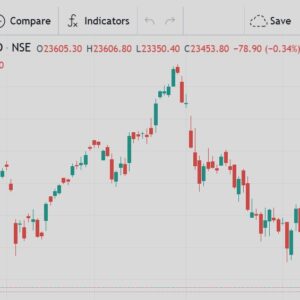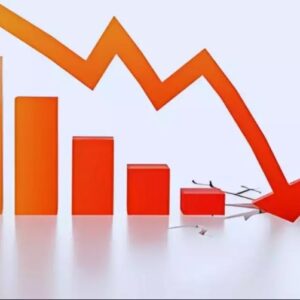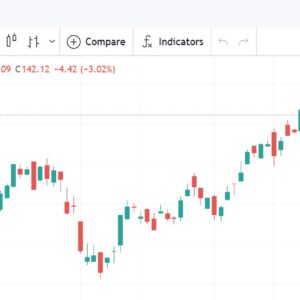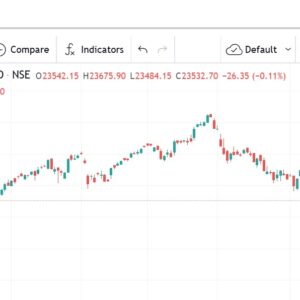Gold Price Fall: Comprehensive Analysis and Key Factors Influencing Decline

In recent years, gold prices have shown volatility, driven by various economic, geopolitical, and market factors. Despite its reputation as a “safe-haven” asset, gold experiences price declines, influenced by changing global conditions and investor sentiment. This detailed analysis explores the reasons behind gold price declines, the impact of international economic factors, and how these shifts affect investors, central banks, and global markets.
Why Do Gold Prices Fall? An Overview of Key Drivers
Gold prices are sensitive to numerous variables, often reflecting a blend of economic, political, and market factors. Here, we examine the most significant factors causing gold prices to fall:
- Interest Rates and Bond Yields: Interest rates, especially those set by the U.S. Federal Reserve, have a significant impact on gold prices. When the Federal Reserve raises interest rates, it generally strengthens the U.S. dollar and makes interest-bearing assets, such as bonds, more attractive relative to gold, which does not yield interest. Higher bond yields can thus pull investors away from gold, leading to a price decline.
- Strength of the U.S. Dollar: Gold prices are often inversely correlated with the U.S. dollar. When the dollar appreciates, it makes gold more expensive for investors holding other currencies, typically leading to reduced demand. A strong U.S. dollar is often seen during periods of economic optimism or when the Fed signals rate hikes, contributing to a fall in gold prices.
- Global Economic Stability and Equity Markets: When equity markets perform well, they tend to attract more investors who may see higher returns than they would in gold. A strong economy can reduce the appeal of gold as a safe asset, especially when investor confidence grows in the stock market. Periods of economic recovery or stability usually see declining gold demand, resulting in lower prices.
- Supply and Demand Factors: Like any commodity, the supply and demand balance influences gold prices. Increased mining output or significant gold sales from central banks can drive prices down. Alternatively, reduced demand from major gold-consuming nations, such as India and China, can also contribute to price declines.
Impact of Federal Reserve Policies on Gold Prices
The Role of Interest Rate Hikes
The Federal Reserve’s monetary policies are a central influence on gold prices. When the Fed raises rates to curb inflation, this affects gold in two primary ways. First, higher rates increase the opportunity cost of holding non-interest-bearing assets like gold. Second, an increase in interest rates usually strengthens the U.S. dollar, further driving down gold prices.
In 2024, for example, anticipated rate hikes have created a bearish sentiment around gold. Investors may prefer to allocate assets toward interest-bearing securities, expecting higher returns. This flight to yield-bearing investments diverts funds away from gold, which lacks yield and is traditionally held as a hedge rather than a growth asset.
Geopolitical Factors and Gold Price Volatility
Geopolitical events often create uncertainty, leading investors to buy gold as a hedge. However, during times of geopolitical stability, the demand for gold often weakens. In 2024, several factors contributed to a relative global calm, reducing the urgency for safe-haven assets like gold:
- Improved Trade Relations: Positive trade relations between large economies (e.g., the U.S. and China) reduce global economic uncertainties, impacting gold demand.
- Stabilized Energy Prices: After a period of high energy prices, stabilization in the energy sector can foster economic confidence, leading investors to explore equities and other growth assets over gold.
While gold tends to perform well during crises, periods of geopolitical calm have the opposite effect, often pushing prices lower as investors reallocate funds to riskier assets with higher potential returns.
Supply and Demand Trends in Key Markets
India and China: Gold’s Biggest Markets
India and China account for a substantial portion of global gold demand. Cultural factors, jewelry purchases, and industrial uses make these countries key players in the global gold market. A decrease in demand from these regions can have an outsized impact on prices.
- India’s Gold Demand: Traditionally, Indian festivals and wedding seasons boost gold demand. However, changes in India’s economic policies or currency fluctuations can alter purchasing patterns. Additionally, rising inflation in India may reduce disposable income, thus impacting gold purchases.
- China’s Economic Growth and Gold Purchases: China’s economic stability plays a role in gold demand. A slowing Chinese economy could lower gold purchases, pushing global prices downward.
When both nations see reduced demand—due to economic policies, consumer behavior changes, or inflationary pressures—global gold prices often experience a decline.
Technological Advancements and Gold Alternatives
Innovative financial products and digital assets are providing alternatives to gold as a safe-haven investment:
- Cryptocurrencies: Cryptocurrencies like Bitcoin and Ethereum have emerged as modern “safe-haven” assets, especially for younger investors who see them as digital gold. This shift has diverted a segment of potential gold investors, contributing to decreased demand.
- Digital Gold: Digital gold investment platforms allow smaller, more accessible purchases, impacting traditional buying patterns. While these platforms increase demand, they may also influence how investors interact with physical gold, creating complex effects on market dynamics.
The presence of alternative investment products gives investors more choices for hedging risk, reducing the reliance on gold alone and thus impacting prices.
Technical Analysis: Gold Price Movements and Support Levels
Key Technical Indicators for Gold
Technical analysis is crucial for understanding gold price trends. Key indicators often used in technical analysis include Relative Strength Index (RSI), moving averages, and Bollinger Bands.
- Moving Averages: When the 50-day moving average crosses below the 200-day moving average, it signals a potential downtrend, known as a “death cross.” Analysts monitor these indicators closely for signs of support or resistance.
- RSI: If RSI is above 70, gold may be overbought, while below 30 indicates oversold conditions. This helps traders predict potential price rebounds or declines.
These indicators help traders and investors gauge market sentiment around gold, giving insights into short-term price movements and potential rebounds.
The Long-term Outlook for Gold Prices
Despite periodic declines, gold remains a reliable asset for long-term wealth preservation. Factors such as inflationary pressures, currency devaluations, and central bank policies will continue to influence gold prices. While interest rate changes and geopolitical stability create short-term price fluctuations, the long-term fundamentals of gold, such as its finite supply and historical store of value, suggest that gold remains an essential asset in diversified portfolios.
Central Bank Activity and Gold Purchases
Central banks hold gold reserves to support currency stability. During 2024, central banks, particularly in emerging markets, continued to increase gold holdings as a defense against currency volatility. This buying trend generally supports prices in the long run, as central banks prioritize gold as a stable asset.
Investment Strategies for Navigating Gold Price Declines
- Diversification: Diversifying into equities, bonds, and other commodities can reduce exposure to gold price volatility.
- Dollar-Cost Averaging (DCA): For long-term investors, buying gold in smaller amounts regularly allows investment at various price points, reducing the impact of short-term price drops.
- Hedging Against Inflation: Gold remains a key hedge in inflationary times. Investors looking to safeguard against inflation may consider holding a percentage of their portfolio in gold.
While short-term fluctuations in gold prices are expected, these strategies allow investors to capitalize on long-term price growth.
Conclusion: Navigating the Gold Market Amid Price Falls
Gold prices are influenced by a complex interplay of economic, political, and technological factors. While short-term declines can be unsettling, understanding the drivers behind these movements—such as interest rates, currency strength, and global stability—can help investors make informed decisions. In an increasingly diverse investment landscape, gold continues to hold a valuable place as a hedge and store of wealth. By staying informed on key economic indicators and leveraging diversification, investors can navigate gold market volatility with greater confidence.









